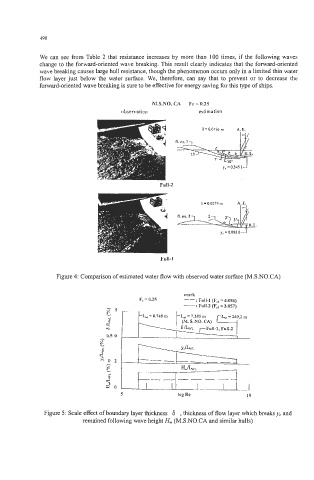Page 515 - Practical Design Ships and Floating Structures
P. 515
490
We can see from Table 2 that resistance increases by more than 100 times, if the following waves
change to the forward-oriented wave breaking. This result clearly indicates that the forward-oriented
wave breaking causes large hull resistance, though the phenomenon occurs only in a limited thin water
flow layer just below the water surface. We, therefore, can say that to prevent or to decrease the
forward-oriented wave breaking is sure to be effective for energy saving for this type of ships.
MSNO. CA Fr = 0.25
observation estimation
I oli-f
Figure 4: Comparison of estimated water flow with observed water surface (M.S.NO.CA)
mark
F, = 025 -. Full-I (F,, = 4.0%)
--*
3.057)
Full-2 (F,,
51
2
'0
0.5 0
S log Re IO
Figure 5: Scale effect of boundary layer thickness 6 , thickness of flow layer which breaks yc and
remained following wave height H, (M.S.NO.CA and similar hulls)

